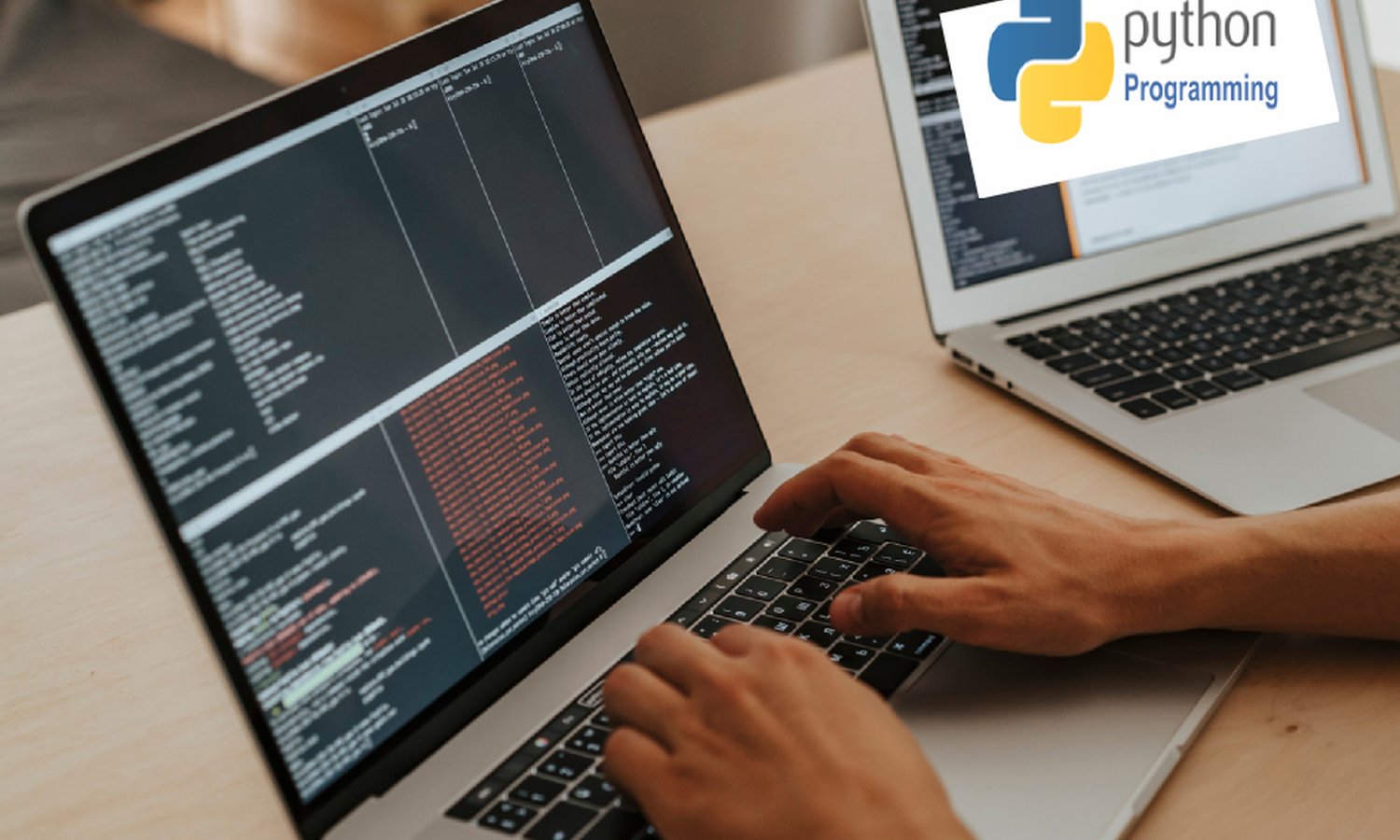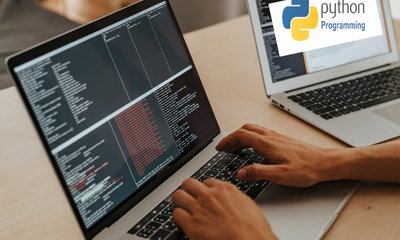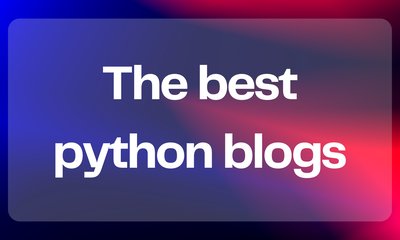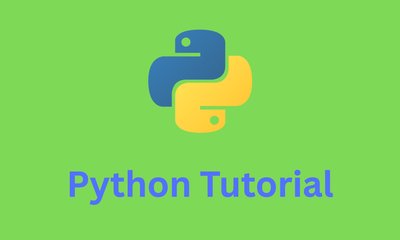Python Programming Fundamentals: A Beginner's Guide
By JoeVu, at: May 15, 2023, 6:32 p.m.
Estimated Reading Time: __READING_TIME__ minutes


What is the best way to learn Python programming?
Python is a popular programming language used in various fields such as web development, data science, machine learning, and more. If you are interested in learning Python, there are several ways to go about it. Here are some suggestions on the best way to learn Python programming:
- Start with the basics: Learning the fundamentals of Python programming is crucial. This includes understanding the syntax, data types, variables, operators, and control structures. There are many resources available online such as tutorials, videos, and books that cover these topics in detail.
- Practice coding: As the saying goes, practice makes perfect. The more you practice coding in Python, the more comfortable you will become with the language. Try to write small programs or scripts to solve problems or automate tasks. Coding challenges and exercises can also help you improve your skills.
- Attend a bootcamp: If you prefer a more structured approach to learning, attending a Python bootcamp can be a great option. Bootcamps offer hands-on training, mentorship, and a community of learners. They are designed to take you from beginner to advanced levels within a short period of time.
- Join online communities: Joining online communities such as forums, social media groups, and coding communities can be helpful in learning Python. You can ask for help, share your work, and learn from others in the community.
- Learn from the creator of Python: Guido van Rossum, the creator of Python, has written several books on advanced Python programming topics. These books are a great resource for those who want to take their skills to the next level. They cover topics such as advanced data structures, algorithms, and object-oriented programming. However, these books are more suitable for intermediate to advanced learners.
Learning Python can be a challenging but rewarding experience. With the right resources and approach, you can master the fundamentals of the language and even become an expert in advanced topics such as machine learning and web development. Whether you choose to learn at home, attend a bootcamp, or join an online community, remember to practice coding and develop good habits such as proper indentation and commenting. Happy coding!
What are the benefits of using Python?
Python is an extremely popular programming language with a wide range of applications in various fields such as data science, web development, machine learning, and more. Here are some of the benefits of using Python:
- Easy to Learn and Use: Python has a simple and easy-to-understand syntax that makes it easy for beginners to learn and use. This makes it an ideal language for anyone who is new to programming.
- Versatile: Python can be used for a wide range of applications such as web development, data analysis, machine learning, scientific computing, and more. Its flexibility allows developers to create and implement complex algorithms and workflows.
- Large Community: Python has a large and active community of developers who are constantly contributing to its development. This means that there is plenty of support available for developers who need help with their coding projects.
- Machine Learning and Data Science: Python is widely used in the fields of data science and machine learning. It has many libraries and tools that help developers to build complex models and analyze large datasets.
- Indentation: The use of indentation in Python encourages good coding practices and makes code more readable and easy to understand.
- Guido van Rossum: Python was created by Guido van Rossum, who is a respected and well-known figure in the programming world. His expertise and vision have helped to shape the language into what it is today.
Overall, Python is a powerful and versatile language with a wide range of applications and benefits.
What are some popular libraries and frameworks for Python?
Python is one of the most popular programming languages in the world, and it has a vast array of libraries and frameworks available for use. These tools can help developers create more advanced applications, ranging from web development to machine learning and data science.
Some of the most popular libraries and frameworks for Python include:
- NumPy: This library is used for scientific computing and provides support for large, multi-dimensional arrays and matrices.
- Pandas: Pandas is a library used for data manipulation and analysis, and includes support for data frames and data series.
- Django: Django is a web framework that is often used for building complex web applications. It includes support for user authentication, templating, and URL routing.
- Flask: Flask is a micro web framework that is lightweight and easy to use. It is often used for building smaller web applications and APIs.
- Tensorflow: Tensorflow is a machine learning library that is often used for deep learning applications. It includes support for training and deploying neural networks.
- Scikit-learn: Scikit-learn is a machine learning library that is often used for more traditional machine learning applications, such as classification and regression.
- Matplotlib: Matplotlib is a data visualization library that is often used for creating charts, graphs, and other visualizations.
- Tornado: The Tornado framework is a powerful and scalable web framework for Python. It is known for its high-performance, non-blocking I/O model, which makes it ideal for handling a large number of concurrent connections. Tornado is often used for building real-time web applications, APIs, and web services.
These are just a few of the many libraries and frameworks available for Python. Depending on your level of expertise and the type of application you are building, you may find other tools
How do you debug a Python program?
Debugging a Python program is an important step in the development process as it helps in identifying and resolving errors in the code. Here are some ways to debug a Python program:
- Print statements: The simplest method to debug a Python program is to use print statements. You can insert print statements at various points in the code to check the value of variables and see which parts of the code are being executed.
- Debugger: Python comes with a built-in debugger module, called pdb. This module allows you to set breakpoints in your code and step through it line by line, inspecting variables and expressions at each step.
- IDEs: Integrated Development Environments (IDEs) like PyCharm, Visual Studio Code, and Eclipse have built-in debugging tools that allow for easy debugging of Python programs.
- Logging: Another way to debug a Python program is to use logging. You can insert log statements at various points in your code to log important events and information, which can help in identifying errors.
- Indentation: Python relies heavily on indentation to define code blocks. A common cause of errors in Python programs is incorrect indentation. Double-checking the indentation can help in identifying and resolving such errors.
In conclusion, there are several methods to debug a Python program, ranging from simple print statements to advanced debugging tools in IDEs. By being thorough and paying attention to detail, you can effectively debug your Python programs and optimize their performance.
Following our blog posts, there are many useful articles





